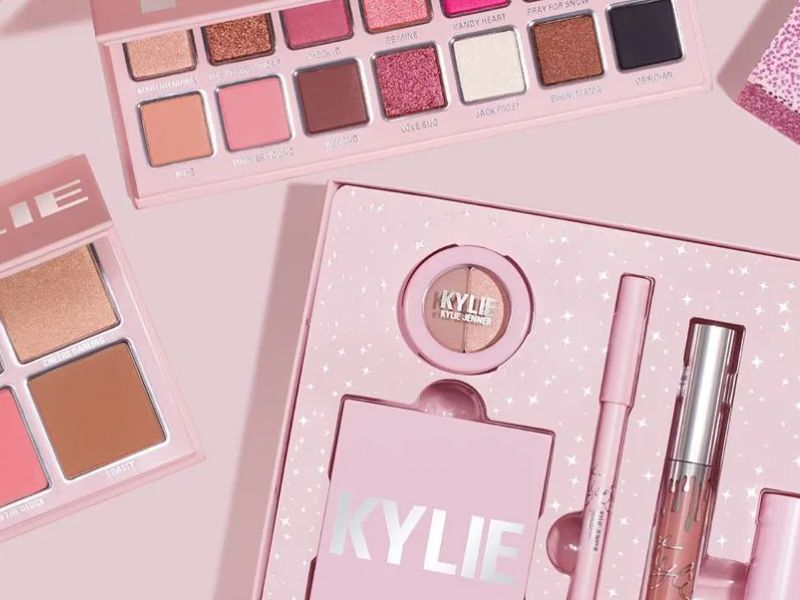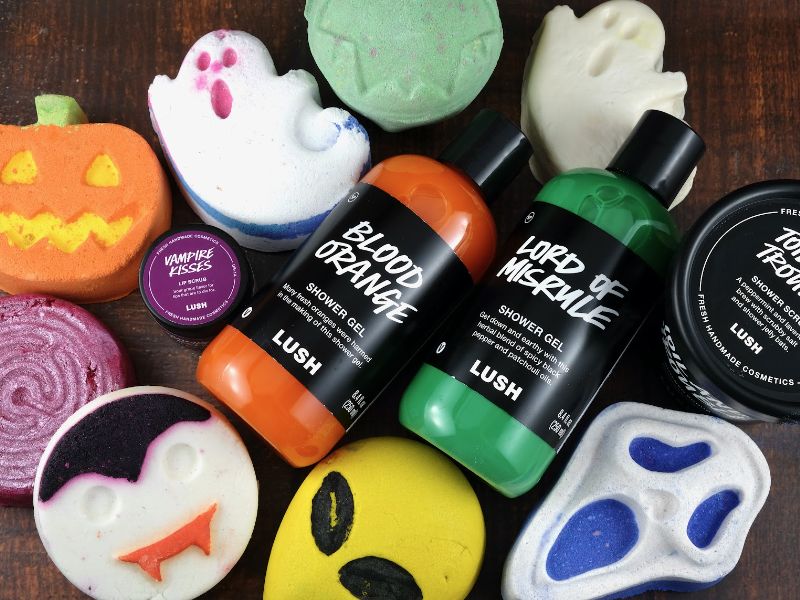Product packaging isn’t just about keeping a product safe. Far from it! It plays a crucial role in marketing as well, driving consumers’ purchasing decisions and shaping their experience with a brand. But let’s go deeper…
So, what is product packaging? Simply put, it’s the method of preparing goods for transport, warehousing, logistics, sale, and eventual use. I know, it sounds a lot like wrapping a present and it kind of is! Your product is that “gift” you want to present perfectly to your customer base.
It’s more than just about physical protection, though. Packaging of a product should emphasize the product’s benefits, its uniqueness and quality. Great product packaging can evokes a positive emotional response and leave a lasting impression. Why is packaging important? Imagine walking through store shelves filled with similar products. I bet it’s the packaging that catches your eyes first. Whether it’s the vibrant colors, eye-catching graphics, or the unique fonts, these packaging details play a huge part in drawing customers towards your product.
There’s so much more to it than just the practical function of packaging goods. The packaging of products has been given a greater role in product promotion today. In essence, it bears the responsibility of communicating a brand’s story and projecting its values. When it comes to consumer product packaging, it’s like a silent salesperson, speaking directly to shoppers about the quality of your product and why it stands out from rest.
Good packaging can boost your brand recognition and loyalty as well. If the Coca-Cola logo and its distinct bottle shape come to mind when you read ‘Coca,’ it illustrates the power of packaging pretty well. It’s what makes the Coca-Cola brand instantly recognizable all over the world! Talk about a lasting impression, right?
Don’t think of it as an afterthought. Put simply, packaging a product is like crafting an intricate story — one that your customers would want to be a part of.
Insights into Marketing: The Role of Packaging
Packaging plays a pivotal role in marketing strategy. It’s not just about wrapping a product in a pretty box. It’s about creating a great way to reach your target market and make a lasting impression.
Think about it. When you’re scrolling through social media, what catches your eye? It’s usually the eye-catching imagery and graphics, right? That’s the power of packaging. It’s a silent salesman, working tirelessly to attract new customers and keep existing ones coming back for more.
Packaging serves as a key element in a brand’s marketing strategy because it’s often the first thing a customer sees. First impressions matter, and packaging is often the first touchpoint between your product and the customer. It’s a great way to communicate the quality of your product and the values of your brand.
Packaging also plays a crucial role in brand awareness. A unique and memorable packaging design can help your product stand out on store shelves, making it easier for customers to recognize and remember your brand. This can lead to repeat purchases and increased brand loyalty.
Moreover, packaging can also play a significant role in e-commerce. Online shoppers don’t have the luxury of touching or feeling a product before purchasing. Therefore, the packaging of a product becomes even more important in creating a positive user experience and making a good first impression.
In addition, sustainability is becoming increasingly important in today’s society. Many consumers are making purchasing decisions based on a brand’s commitment to sustainability. Therefore, incorporating sustainable practices into your packaging designs can be a great way to attract eco-conscious shoppers and differentiate your brand from competitors.
The Impact of Packaging on Brand Identity and Recognition

Whether you’re a small business or a global player, your product packaging is a vital component of establishing your brand identity. From the colors and font used to imagery and logo, everything tells a part of your brand’s story.
Remember that a brand goes beyond a cool logo or catchy name. It’s a combination of customer experiences, values, and emotions linked with your product. A significant part of creating a strong brand identity rests in successful product packaging.
Why is packaging important in marketing? The packaging of a product is an embodiment of a brand — it must resonate with your target market, reflect brand values, and be distinct enough to be recognizable instantly. Take Coca-Cola, for example. The iconic brand’s red-and-white palette and stylized font enable worldwide recognition.
Packaging can trigger fond memories or positive associations in the minds of shoppers, influencing their purchasing decisions and creating brand loyalty. Your packaging communicates your brand’s identity directly into the hands of consumers, helping raise brand awareness. Logos, imagery, and specific colors remind consumers of past experiences with your product, fueling recognition and repeat purchases, all thanks to good product packaging.
In a perspective where e-commerce is growing, packaging also mirrors the quality of your product and the care that you’ve put into it to online shoppers. Think of premium packaging, which often feels like unwrapping a gift—such an experience can elicit a positive emotional response, paving the way for a new customer to become a loyal one.
The Connection between Packaging and Product Protection
Picture unboxing an eagerly anticipated delivery, only to find the item damaged. Not a pleasant memory to associate with the brand, right? This is where packaging plays a crucial role in the physical protection of products, especially during shipping and logistics. But that’s just the physical aspect of it.
Packaging is responsible for preserving the freshness and maintaining the quality of food products, for instance. It can keep a product safe from environmental elements like heat, cold, moisture, and dirt.
A product’s benefits and quality, if preserved well through packaging, not only avoid damage to goods but also to a company’s image. If a package prevents tampering with a product, the purpose of packaging is not just being performed, it’s acing the pivotal task of maintaining the consumer’s trust and confidence in your product!
In fact, packaging often goes hand-in-hand with product marketing goals. Custom packaging that is not only sturdy but exudes the brand’s values shows that the company cares about its customers and their experience.
Imagine a brand prioritizing sustainability in its brand values. Adopting biodegradable, recyclable packaging would showcase their commitment 10 times better than any marketing campaign, honestly! That’s because the packaging bears testimony to their values reaching customer’s hands. And guess what? This leads to improved brand loyalty and customer satisfaction, proving the importance of packaging yet again.
Also, packaging should be designed in a way that it adds convenience to the users’ lives. Easy to open, resealable, easy to store are some of the factors that not only promise a good product but a great user experience as well.
How Packaging Serves as a Powerful Marketing Tool

Packaging is not just a protective shell for a product, it’s a powerful marketing tool that can make or break a purchasing decision. It’s the first thing that a customer sees, and it’s a great way to make a lasting impression.
Think about it. When you’re scrolling through social media, what catches your eye? It’s usually the eye-catching imagery and graphics, right? That’s the power of packaging. It’s a silent salesman, working tirelessly to attract new customers and keep existing ones coming back for more.
Packaging serves as a key element in a brand’s marketing strategy because it’s often the first thing a customer sees. First impressions matter, and packaging is often the first touchpoint between your product and the customer. It’s a great way to communicate the quality of your product and the values of your brand.
Packaging also plays a crucial role in brand awareness. A unique and memorable packaging design can help your product stand out on store shelves, making it easier for customers to recognize and remember your brand. This can lead to repeat purchases and increased brand loyalty.
Moreover, packaging can also play a significant role in e-commerce. Online shoppers don’t have the luxury of touching or feeling a product before purchasing. Therefore, the packaging of a product becomes even more important in creating a positive user experience and making a good first impression.
In addition, sustainability is becoming increasingly important in today’s society. Many consumers are making purchasing decisions based on a brand’s commitment to sustainability. Therefore, incorporating sustainable practices into your packaging designs can be a great way to attract eco-conscious shoppers and differentiate your brand from competitors.
The Influence of Packaging on Consumer Buying Decisions
It is true that people often judge a book by its cover — the same goes for products and their packaging. Packaging can significantly impact purchasing decisions, often subconsciously. This is particularly true when consumers are faced with an overwhelming array of similar products on store shelves.
In truth, the packaging of products often serves as an introduction, setting expectations about the product inside. An attractive and well-thought-out design can draw in potential customers and influence them positively towards purchasing. Meanwhile, poor packaging may make the product seem inferior and discourage buyers.
Consumers pay a lot of attention to the packaging details. Ingredients, nutritional facts, a brand’s story, production and expiry dates, all subtly influence their decision-making process. Beautifully packaged products may evoke a positive emotional response, making the experience memorable and increasing the odds of repeat purchases.
Understanding your target market is also crucial in packaging design. Colours, fonts, and imagery all contribute to a product’s appeal to the target demographic. For instance, minimalist packaging may appeal to the eco-conscious and millennial shoppers, while vibrant and interactive designs can attract younger consumers.
How Can Packaging Be Used as a Differentiator in a Saturated Market?

In today’s competitive market, where countless products vie for consumer attention, packaging can be the game-changer. It’s not just about protection and logistics anymore; it’s about standing out and making a statement.
In a saturated market, products often have similar features, benefits, and price points. So, how does one product stand out from the rest? The answer often lies in its packaging. Unique packaging designs can set a product apart, making it more memorable and desirable to consumers.
For instance, consider two products with similar benefits and price points. One is packaged in a generic box, while the other boasts custom packaging that tells the brand’s story, emphasizes the product’s benefits, and resonates with the target market. Which one would you be more inclined to pick up? The latter, most likely.
Custom packaging can also evoke a sense of exclusivity and luxury, even if the product inside is relatively affordable. This perception can drive sales, as consumers often associate premium packaging with high-quality products.
How Do Cultural Differences Influence Packaging Preferences?
Packaging isn’t always a ‘one-size-fits-all’ game; cultural nuances play a pivotal role in shaping consumer perceptions and expectations toward packaging and, ultimately, the product inside. Understanding these cultural differences is crucial for brands looking to expand globally or cater to a diverse customer base.
Here are a few examples of how cultural differences look like in the table below:
| Cultural Aspect | Importance in Packaging | Example |
| Colors, Symbols, Numbers | They have different connotations in various cultures and can significantly drive perceptions and purchasing decisions. | Red signifies luck and prosperity in Chinese culture but may denote danger or caution in Western societies. |
| Language | It is critical for respecting the local culture and establishing rapport with local consumers. The information on packaging should be in the local language. | Consideration of local slang, idioms, and phrases could help avoid inadvertently offensive connotations. |
| Style of Communication | Communication styles vary across cultures and can influence packaging design and messaging. | Some societies value direct and assertive messaging, while others might prefer a subtle and indirect approach. |
| Sustainability | The importance of eco-friendliness and sustainability can vary across cultures and can influence packaging choices. | In some regions, eco-friendly packaging is preferred, while in others, packaging that emphasizes luxury or status can be more appealing. |
| Iconography | Usage of icons and imagery that resonate with the local culture can enhance the connection with consumers. | The usage of local flora, fauna, or traditional symbols can make the product feel familiar and appealing. |
| Packaging Shape and Size | Cultural habits and practices may dictate preferences for packaging shapes and sizes. | Some cultures may prefer compact and minimalistic packaging due to smaller living spaces or for environmental considerations. |
| Celebrations & Local Festivals | Incorporating elements from local celebrations or festivals can lead to increased sales during those periods. | Limited edition packaging during the Lunar New Year in many Asian societies or Christmas-themed packaging in Western societies. |
| Social and Gender Norms | Understanding social and gender preferences in each market can help brands cater their packaging more effectively. | Some cultures may have strong color associations for different genders, influencing packaging color choices. |
The Role of Packaging in Customer Experience and Satisfaction
Packaging is a crucial touchpoint in the customer journey, and it significantly influences the overall customer experience and satisfaction. It’s not just about the product anymore; it’s about the experience that starts the moment customers lay their eyes on the product.
A well-designed package can create an unboxing experience that feels more like unwrapping a gift than a purchase. This can evoke a positive emotional response, enhancing the customer experience and increasing satisfaction. It’s not just about the ‘wow’ factor; it’s about making the customer feel valued and appreciated.
Moreover, packaging can also provide valuable information about the product, such as its benefits, usage instructions, and nutritional facts for food products. This not only helps customers make informed purchasing decisions but also enhances their experience by making the product easier to use and enjoy.
Sustainability is another factor that can influence customer experience and satisfaction. Eco-friendly packaging can appeal to environmentally conscious consumers, enhancing their perception of the brand and increasing their satisfaction.
Packaging can also play a role in after-sales service. For instance, easy-to-open packaging, resealable packages, or packaging that can be repurposed can enhance the customer experience even after the product has been used.
How Can Businesses Measure the ROI of Their Packaging Efforts?
Measuring the return on investment (ROI) of packaging efforts can be a complex task, but it’s crucial for businesses to understand the value derived from their packaging strategies.
Here is a list of examples of how ROI can be measured:
- One of the most direct ways to measure the ROI of packaging is by tracking sales before and after a packaging redesign. An increase in sales can indicate that the new packaging is more appealing to consumers.
- Customer feedback is another valuable tool for measuring the effectiveness of packaging.
- Brand recognition is another key metric. If more people recognize your brand after a packaging redesign, it’s a good sign that your new packaging is making an impact.
- In the e-commerce world, unboxing videos and social media shares can be a good indicator of packaging success.
- Sustainability efforts can also be measured. If a switch to eco-friendly packaging leads to positive press, increased customer loyalty, or even cost savings in terms of materials or shipping, these can all contribute to a positive ROI.
How Has the Evolution of E-commerce Affected Packaging Strategies?
The rise of e-commerce has significantly impacted packaging strategies. With more and more consumers shopping online, the role of packaging has evolved beyond just protecting the product during shipping. It’s now a crucial part of the customer experience and a powerful marketing tool.
In the e-commerce world, packaging is often the first physical touchpoint between the brand and the customer. It’s an opportunity to make a great first impression, create a memorable unboxing experience, and build a lasting relationship with the customer.
E-commerce has also led to the rise of ‘unboxing’ as a phenomenon. A well-designed package can turn the unboxing process into a shareable moment, encouraging customers to post pictures or videos on social media, thereby providing free advertising for the brand.
Moreover, with the increase in online shopping, the demand for sustainable packaging has also grown. Many online shoppers are environmentally conscious and prefer brands that use eco-friendly packaging. This has led brands to explore innovative, sustainable packaging solutions.
However, e-commerce packaging also needs to be functional. It needs to protect the product during transit, be easy to open, and ideally, be easy to return if needed. This has led to innovations in packaging design, such as frustration-free packaging and return-friendly packaging.
Conclusion
In the vast realm of marketing, the importance of packaging is paramount. It’s not just about safeguarding the product; it’s about establishing a dialogue with the customer, echoing the brand’s ethos, and crafting a memorable experience.
From the moment a customer encounters a product, be it on a bustling store shelf or a sleek e-commerce platform, the packaging is instrumental in shaping their perception of both the product and the brand. It can steer purchasing decisions, amplify the customer experience, and even foster brand loyalty.
Moreover, in an era where sustainability is not just a buzzword but a genuine concern, packaging presents brands with a golden opportunity to showcase their dedication to environmental stewardship.
In a saturated market, where differentiation is key, unique and innovative packaging can make a product truly stand out, leaving an indelible mark on the consumer’s mind. It narrates a brand’s story, resonates with the target demographic, and ultimately, propels sales.
Enter Cosmopacks, a leader in cosmetic packaging and services. Recognizing the pivotal role packaging plays in marketing, Cosmopacks offers expertise to help customers navigate the myriad of packaging options.
Our team assists in selecting the most suitable and cost-effective solutions tailored to individual projects, ensuring that the packaging not only looks good but also aligns with the brand’s values and objectives.
Remember, your product’s packaging is often the first tangible touchpoint between your brand and the customer. Make every inch of it count!
Contact us today if you want to elevate your brand with innovative designs, sustainable solutions, and a commitment to functionality!




